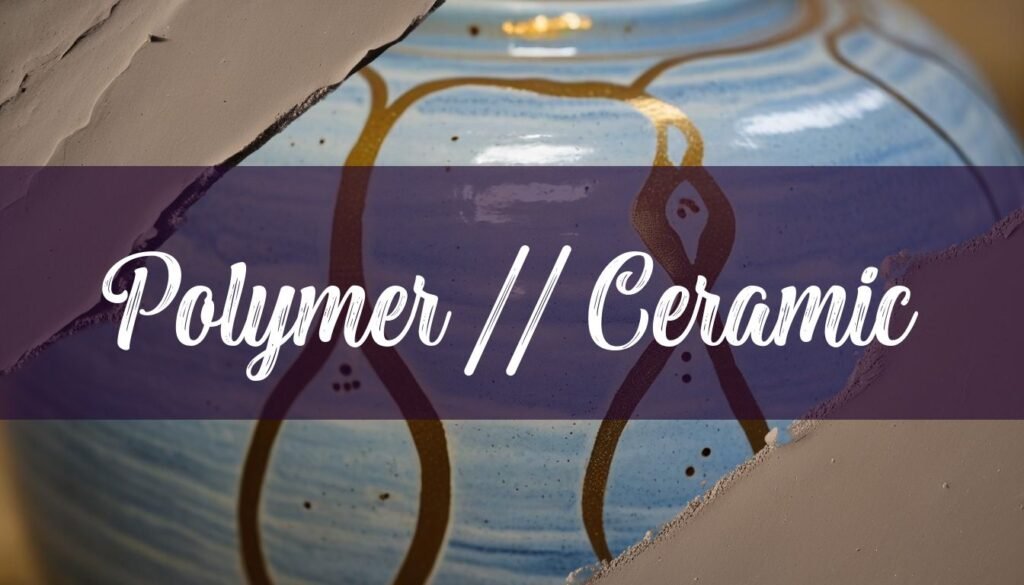Polymer clay offers a fantastic way to mimic the look of ceramic, providing a lighter, more durable, and user-friendly alternative. The allure of ceramics lies in its handcrafted appearance, the subtle variations in texture and color, and its inherent artistry. With polymer clay, you can capture these qualities while enjoying the benefits of a more forgiving medium. Whether you’re aiming for a glossy, glazed finish or a rustic, aged effect, mastering a few key techniques can transform your polymer clay creations into convincing ceramic replicas.
Achieving the Ceramic Look with Polymer Clay
The foundation of a successful ceramic-like polymer clay piece lies in proper surface preparation. This involves creating a smooth, even base that will enhance the subsequent layers of paint and sealant. Begin by carefully sanding your baked polymer clay piece. Start with a coarser grit sandpaper to remove any imperfections, sharp edges, or unwanted textures. Gradually move to finer grits to achieve a silky-smooth surface. Wet sanding can be particularly effective, as it helps to minimize dust and create an even smoother finish (wet sanding tutorial). Buffing is another crucial step. Use a soft cloth or a specialized buffing tool to further refine the surface, creating a subtle sheen that mimics the natural luster of ceramic. Remember, the smoother the base, the more convincing your final ceramic effect will be (polymer clay techniques). Consider using a white clay base, as it provides a neutral canvas for applying colors and effects (surface effects for polymer clay).
Painting is where the transformation truly begins. Acrylic paints are an excellent choice for polymer clay due to their versatility and ability to create opaque, even coverage (best polymer clay brand). When painting, apply thin, even coats, allowing each layer to dry completely before adding the next. This prevents the paint from becoming too thick and obscuring the clay’s details. For a glossy ceramic look, consider using a high-gloss acrylic paint or varnish. Multiple coats may be needed to achieve the desired level of shine. Conversely, for a matte finish, opt for matte acrylic paints or sealants. You can also experiment with layering different colors to create depth and dimension, mimicking the subtle variations often found in handmade ceramics. For an antiqued look, apply a thin paint or add water to a thicker paint and brush the thinned paint onto your project, letting it settle in the crevices (surface effects for polymer clay). Then either wipe the paint off raised surfaces or leave all the paint to dry. Alcohol inks provide a unique tint to baked clay creations. Work in thin coats to build up the color for opaque coverage and to avoid adding thick layers that won’t dry properly. You could also try ash glazes to give the piece a distinct earthy finish. For those interested in unique decorative techniques, sgraffito can add intricate designs by scratching through a top layer to reveal the clay beneath.
Sealants and varnishes are essential for protecting your painted polymer clay and enhancing its ceramic-like appearance. A good sealant will not only protect the paint from scratches and wear but also contribute to the overall finish, whether glossy or matte (polymer clay techniques). Look for sealants specifically designed for polymer clay, as these are formulated to adhere properly and prevent any unwanted reactions with the clay. Apply several thin coats of sealant, allowing each coat to dry thoroughly before applying the next. This will create a durable, protective layer that enhances the ceramic effect. Liquid Sculpey® also comes in various colors and transparencies to suit numerous projects. Apply it to your project and bake again at a temperature between 275 to 300 degrees Fahrenheit for 15 to 30 minutes (surface effects for polymer clay). Turn off your oven’s convection or fan features to prevent ripples in the liquid clay, and lay the project flat so the liquid clay doesn’t run off as it bakes.
To further enhance the ceramic illusion, consider adding subtle details that mimic the characteristics of handcrafted or aged ceramics. Faux crazing, for example, can be achieved by applying a thin layer of crackle paint or by carefully scoring the surface of the clay with a needle tool before painting (needle tool). Distressing techniques, such as gently rubbing away paint in certain areas or applying a wash of diluted brown paint, can create the look of aged ceramics with natural wear and tear. Experiment with different textures, such as stamping or imprinting patterns onto the clay before baking, to add visual interest and mimic the unique qualities of handmade pottery (products tools). Remember, the key is to create subtle, realistic details that enhance the overall ceramic effect. A needle tool enables you to score, scratch and add texture to your creations (needle tool).
Choosing the Right Clay and Tools
Selecting the appropriate type of polymer clay is crucial for achieving a convincing ceramic look. Original Sculpey® has the look and feel of ceramic clay with a matte finish and comes in white, granite and terra cotta (types of polymer clay). Super Sculpey is also ceramic-like, shatter and chip resistant (about clays). In terms of tools, a basic set should include cutting blades, sculpting tools, small paintbrushes, sandpaper sheets and an acrylic roller (tools).
Baking for Durability and Appearance
Proper baking is essential for hardening the clay and ensuring its longevity. Always preheat your oven to the temperature specified on the clay packaging, and use an oven thermometer to ensure accurate temperature readings (baking polymer clay). Bake the clay for the recommended time, and allow it to cool completely before handling. Underbaking can result in brittle pieces, while overbaking can cause discoloration or cracking. It’s a common misconception that if you baked your clay pieces too hot or for too long that they will become brittle and break. In reality if your clap pieces snap when you bend them, your clay is either too brittle, your temperature isn’t high enough, and/or you’re not baking your pieces long enough (polymer clay tips).
Avoiding Common Mistakes
Several common mistakes can hinder the ceramic effect. Skipping or rushing the conditioning process results in brittle, crumbly clay that breaks easily (7 common mistakes). Excessive handling can cause fingerprints, smudging, and unwanted texture on the surface. Cracks often occur due to trapped air bubbles, sudden temperature changes, or clay that is too thick. Store unused clay in airtight containers, away from heat and sunlight (7 common mistakes). Always bake at the manufacturer’s recommended temperature (usually 110-130°C / 230-275°F) and use an oven thermometer to ensure accurate heat levels (common polymer clay mistakes).
By mastering these techniques and avoiding common pitfalls, you can transform polymer clay into stunning ceramic-like creations that showcase the beauty and artistry of handmade pottery.





